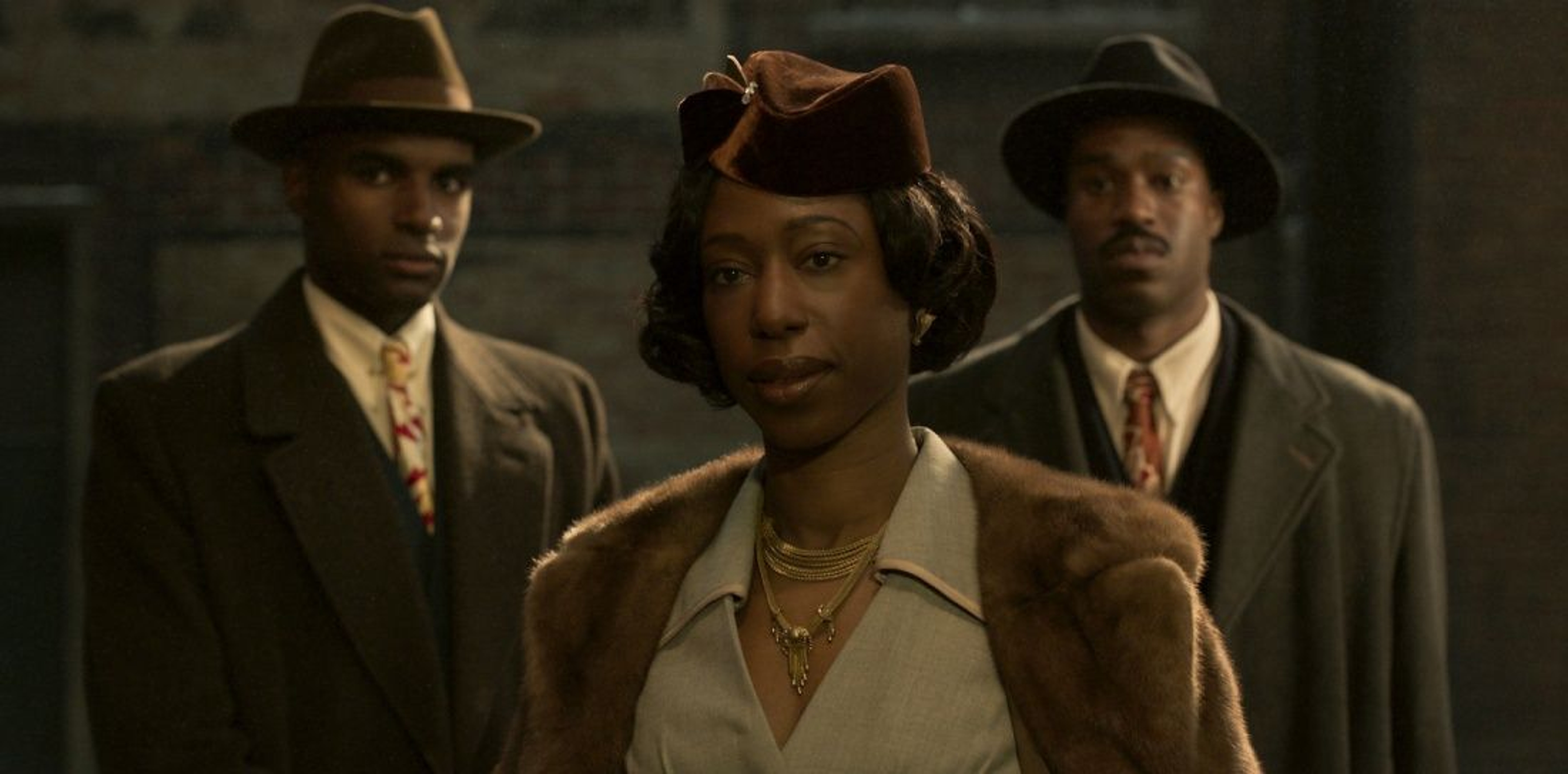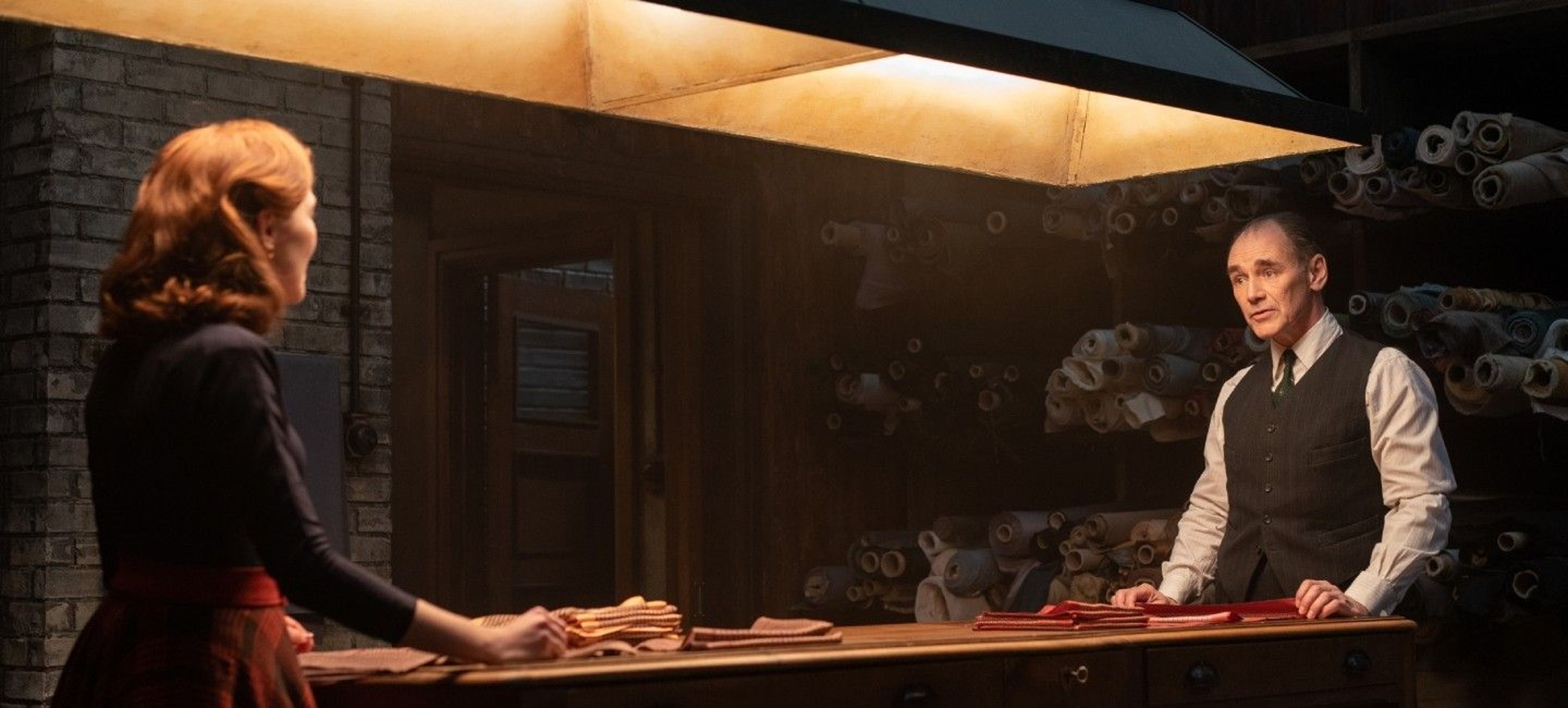In The Outfit, Graham Moore crafts a breathtaking suspense thriller in which Leonard (Mark Rylance), a London tailor living in Chicago in the 1950s, is forced to play a cat-and-mouse game with the local mob to survive. With a supporting cast that includes Zoey Deutch, Dylan O’Brien, and Johnny Flynn, the film ratchets up the tension as Leonard’s shop becomes a surprising stage for betrayals, reversals, and surprises.
To keep the audience on the edge of their seats, Moore reached out to William Goldenberg, with whom he had previously collaborated on The Imitation Game. Goldenberg, who has been nominated for an Academy Award® for editing five times, and won one for Argo, has a lifetime of experience producing pulse-quickening cinematic thrills through his cutting.
We spoke with Goldenberg about working with debut director Graham Moore, tightening the tension in the edit, and identifying with the main character.
The official trailer for The Outfit.
Did working with Graham on The Imitation Game lead you to editing The Outfit?
Yes. Graham spent a lot of time in the editing room during The Imitation Game with the director Morten Tyldum and me. Tyldum invited him into the edit room so he could be able to offer advice or add a new line. As I remember it, Graham was writing his next novel while he sat on the couch behind me. We ended up becoming like family on that film. And I’ve stayed close with Graham. In fact, we are doing something this weekend.
Did having previously worked with him help you get his particular narrative rhythm?
In addition to working with him on The Imitation Game, I’ve read all three of his books and his other screen plays. I find that Graham creates the perfect mix between commercial appeal and intelligent tone in his work. He seems to walk that line perfectly.
Before you started, did Moore discuss his vision for the film’s editing?
We never discussed it. We just knew that we had a really good relationship in the cutting room. As an editor, I start by looking at what's happening with each character, what's happening underneath the text. When I’m thinking about the emotional story as well as the plot, that is what brings an audience into the film and lets them relate to the characters. Graham knows that about me, so we never needed to have any specific conversations about structure.
Does his prowess as a writer help him in the editing room?
Very much so. Graham is one of those rare people who seems to be good at everything he does. Because of his experience as a novelist and a screenplay writer, he came into the film much more seasoned than most first-time directors. He knew exactly why he shot everything and what he was trying to say with the camera. He wasn't spray-painting the material and figuring it out later.

Violet (Nikki Amuka-Bird) and her associates in The Outfit.
The film constantly surprises the viewer by introducing information that changes everything they thought they knew. How did you handle those revelations as an editor?
When I first read the screenplay, the story seemed to be mapped out perfectly. But then when you deal with footage, you have to go by your instincts to determine what people will figure out, whether they will be ahead of you in the plot or trying to catch up. Since we shot during the pandemic, we couldn't have as many friends and family screenings as we normally would do to gauge people’s reactions. When we did finally screen the film, we found out that our instincts were pretty much spot on. Our cut seemed to be pretty connected to what audiences felt — which was a relief.
Were there particular films, especially tightly plotted ones, that you looked at for reference?
Not really. Both of us had already seen a lot of those. Most recently Murder on the Orient Express. We referenced a lot of Agatha Christie, but we didn’t watch any films together.
You’ve edited a number of great suspenseful films. What sort of ways do you ratchet up the suspense in the editing?
I often leave things on a cliffhanger, then cut away, leaving the audience on the edge of their seat. With a film like this, my first instinct is to not let things resolve. The audience is always leaning forward, trying to figure out what’s going to happen next. Then we just leave them there. The other thing is to never have a wasted moment. We made sure to cut away any fat from the story. I also open up the internal story to let the audience get a real feeling for characters, so when we get to the part where the audience is trying to figure out who is double crossing whom, they also care for the characters as people. That is what raises the film to a new level.
In editing, you do a beautiful job of keeping the perspective of every character somewhat limited.
Graham, the cinematographer Dick Pope, and the production designer Gemma Jackson designed such a great space with so many nooks and crannies. We are able to see all these different parts and angles, but the set is constructed in a way that you can’t quite see everything in the tailor shop. Graham made it so that nothing quite lines up. The doors don't line up with each other and the pocket doors don't quite line up. I think that really lends an edginess to the story.
How did Alexandre Desplat’s score affect the edit?
Graham had a lot of ideas about composers which didn't necessarily work out. Then he said to me one day, “What do you think about Alexandre.” I said, “he would be amazing.” We had already created a temp score. We tried to use jazz, because of Chicago in the 50s, but it didn’t really work. So we used a more traditional noir thriller sound. When Alexandre came on, he asked to see the film without the temp score, to see it fresh with no music. Normally, I deliver the edit to a composer with temp score, so I cannot help suspect that she or he will be influenced by it. Alexandre saw it fresh with no score and loved it. When he sent us the opening cue, which became the base for the whole film, he sent four different versions with varying levels of jazziness. We picked out parts of different pieces to use. The film ended up having much more of a jazz score than we thought would work. But that is because Alexandre is a genius.
In the film, Leonard stresses that he is a cutter, not just a tailor. He cuts an outfit with the entire desgin in his head. As an editor, did you feel a connection with the character?
Of course. I really identify with that part of it. When people ask me what a film editor does, I try to explain but inevitably their eyes glaze over. A lot of people think that editing is just something mechanical — putting together pieces of film. But that is not what editing is about at all. So yes, I felt a kinship with Leonard. He sees his job as both an art and a craft, and I definitely identify with that idea.
What would you like audiences to take away?
The best compliment we got was when our title designer said after seeing it, “It's a proper movie, isn't it?” I want people to have a great time and leave the theater thinking, “why don't they make movies like that anymore?”
